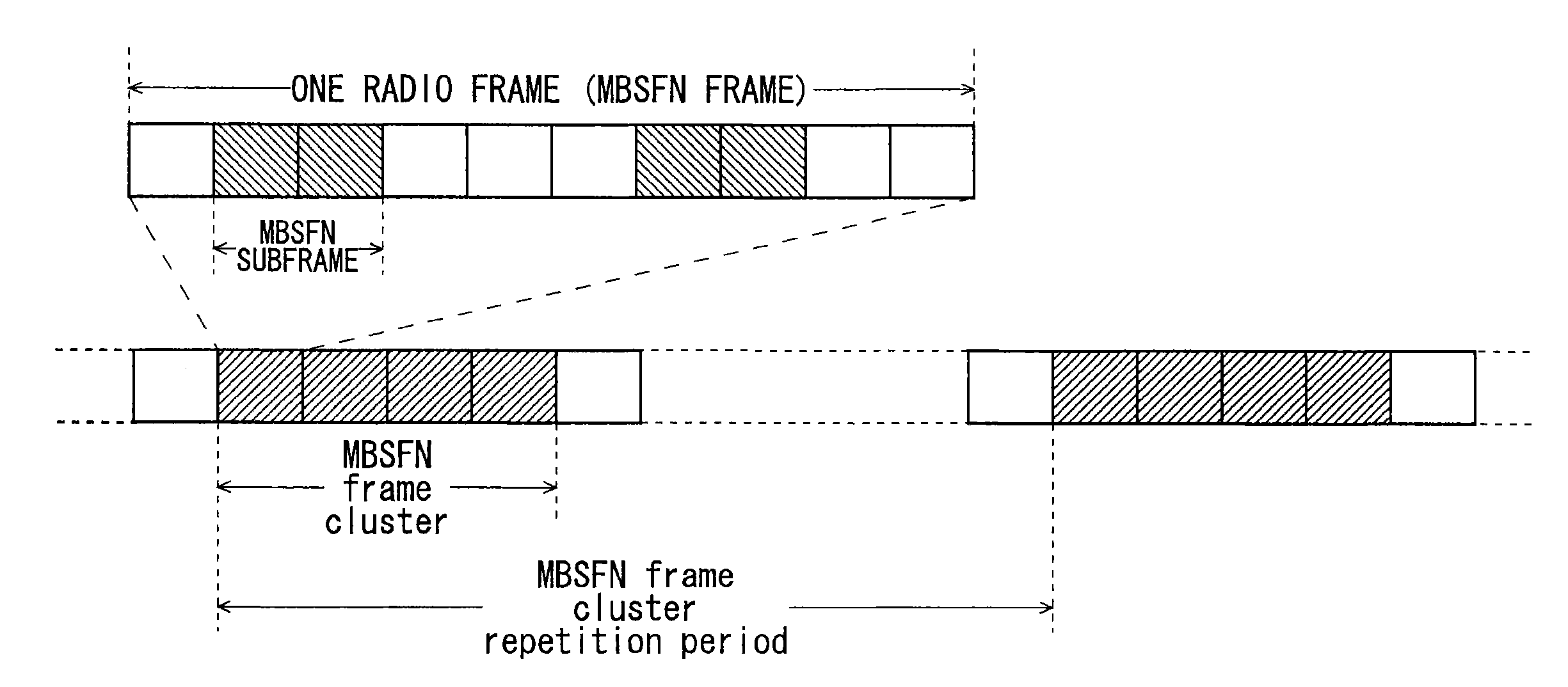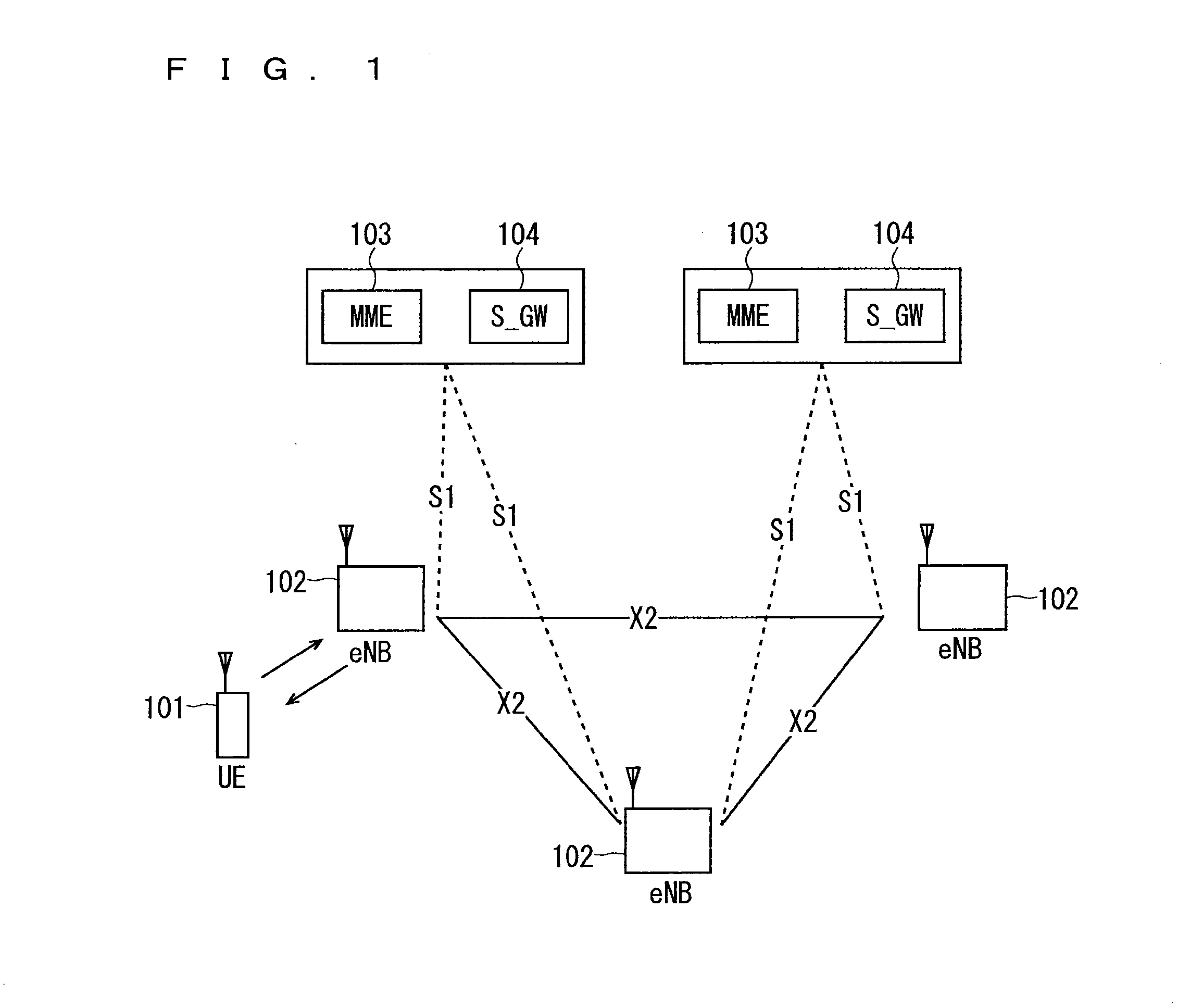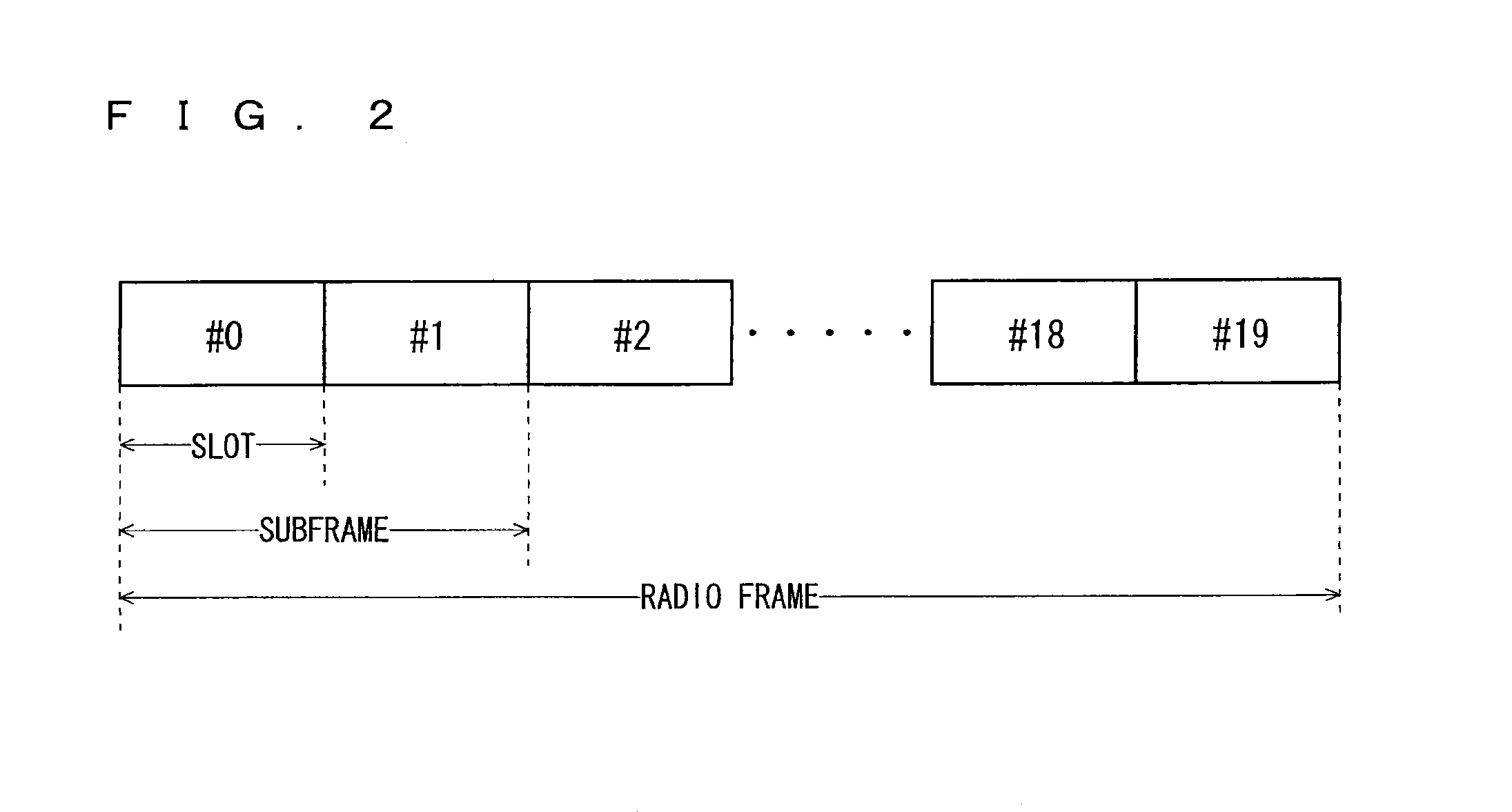Mobile communication system
a communication system and mobile technology, applied in the field of mobile communication system, can solve the problems of reducing the communication rate, rach involves a collision risk, interference between the macro cell or henb and the user equipment, etc., to prevent the decrease in the communication rate and interruption of communication, avoid interference, and avoid interference
- Summary
- Abstract
- Description
- Claims
- Application Information
AI Technical Summary
Benefits of technology
Problems solved by technology
Method used
Image
Examples
first embodiment
[0095]FIG. 7 is a block diagram showing an overall configuration of an LTE mobile communication system, which is currently under discussion of 3GPP. Currently, 3GPP is studying an overall system configuration including closed subscriber group (CSG) cells (Home-eNodeBs (Home-eNB; HeNB) of E-UTRAN, Home-NB (HNB) of UTRAN) and non-CSG cells (eNodeB (eNB) of E-UTRAN, NodeB (NB) of UTRAN, and BSS of GERAN) and, as to E-UTRAN, is proposing the configuration as shown in FIG. 7 (see Chapter 4.6.1 of Non-Patent Document 1).
[0096]FIG. 7 is described. A user equipment device (hereinafter, referred to as “user equipment” or “UE”) 71 is capable of performing radio communication with a base station device (hereinafter, referred to as “base station”) 72 and transmits / receives signals through radio communication. The base stations 72 are classified into an eNB 72-1 that is a macro cell and a Home-eNB 72-2 that is a local node. The eNB 72-1 corresponds to a large-scale base station device and has a ...
fourth modification
of First Embodiment
[0228]While the HeNBs to be notified of the HII are HeNBs present in a certain received power range from a macro cell in the first embodiment, in the present modification, the HeNBs to be notified of the HII are HeNBs present in the range with a specific distance or a path loss from the macro cell.
[0229]The method of judging HeNBs deployed in the range of a specific path loss from a macro cell is achieved by using the path loss in place of the received power disclosed in the first embodiment to the third modification of the first embodiment. For example, in the case of application to the first embodiment, in Step ST1401 of FIG. 14, the HeNB is only required to derive a path loss. The path loss may be derived using the received power measurement results of a cell nearby and the transmission power value of the cell that has been broadcast from the neighbor cell. In Step ST1404, Step ST1405 and Step ST1406 of FIG. 14, a path loss may be used in place of the received ...
fifth modification
of First Embodiment
[0234]While the HeNBs notified of the HII are HeNBs present in a specific received power range from a macro cell in the first embodiment, in the present modification, HeNBs notified of the HII are HeNBs present in a specific direction range with respect to a macro cell.
[0235]The method of judging HeNBs deployed in a specific direction range with respect to a macro cell is achieved with the use of the location information disclosed in the fourth modification of the first embodiment. From the location information of the HeNB and the location information of the macro cell, it is possible to derive a direction in which the HeNB is deployed with respect to the macro cell. Therefore, it suffices that whether or not a HeNB is in a specific direction range is judged based on the information on the direction with respect to the macro cell, which has been derived from the location information.
[0236]Further, from the location information of a UE and the location information ...
PUM
 Login to View More
Login to View More Abstract
Description
Claims
Application Information
 Login to View More
Login to View More - R&D
- Intellectual Property
- Life Sciences
- Materials
- Tech Scout
- Unparalleled Data Quality
- Higher Quality Content
- 60% Fewer Hallucinations
Browse by: Latest US Patents, China's latest patents, Technical Efficacy Thesaurus, Application Domain, Technology Topic, Popular Technical Reports.
© 2025 PatSnap. All rights reserved.Legal|Privacy policy|Modern Slavery Act Transparency Statement|Sitemap|About US| Contact US: help@patsnap.com



